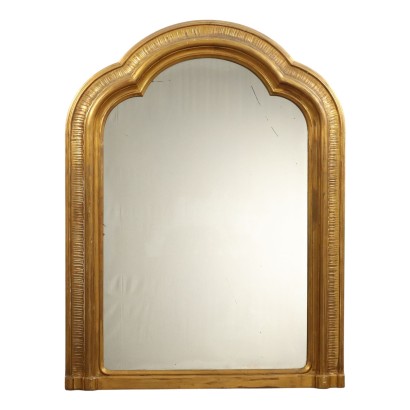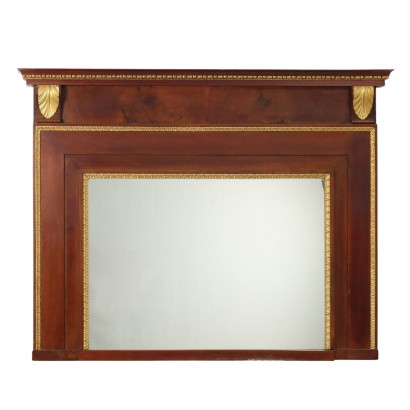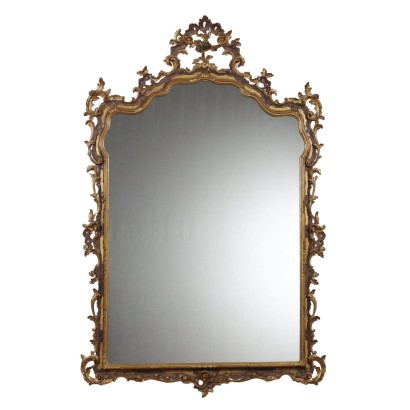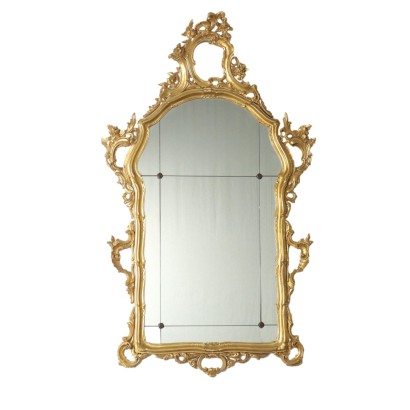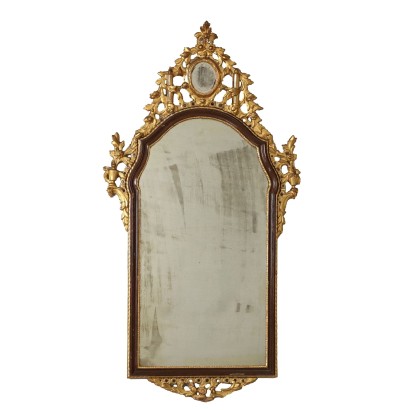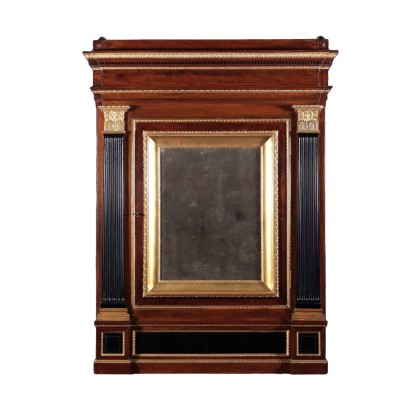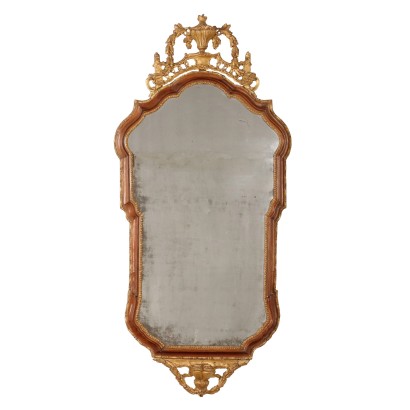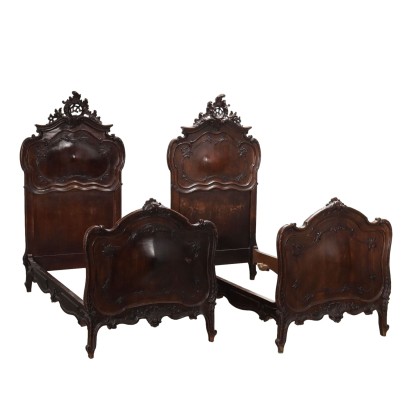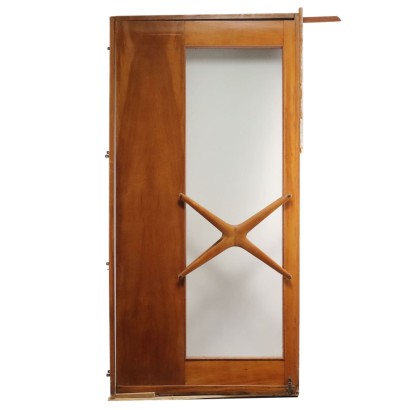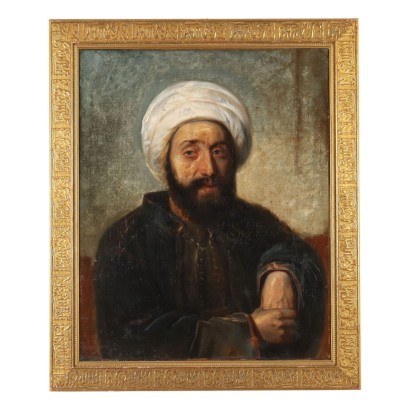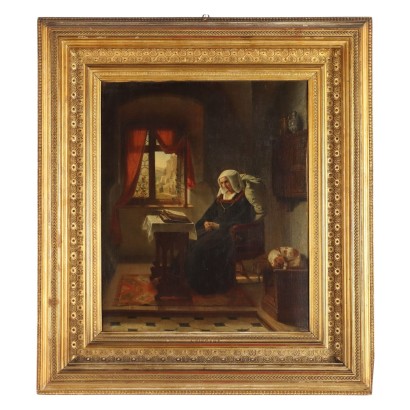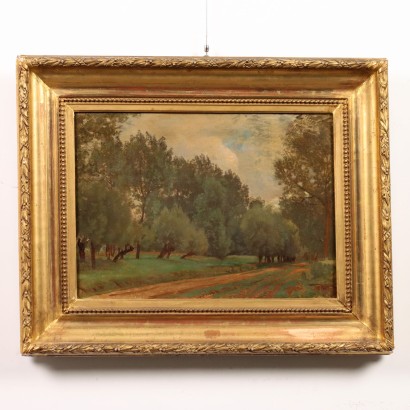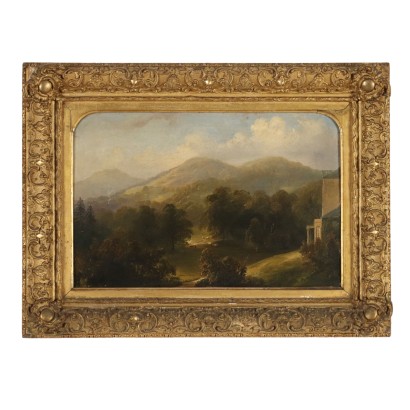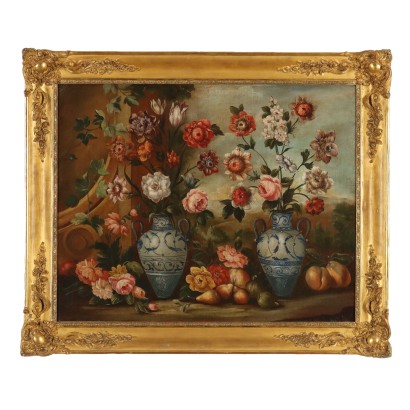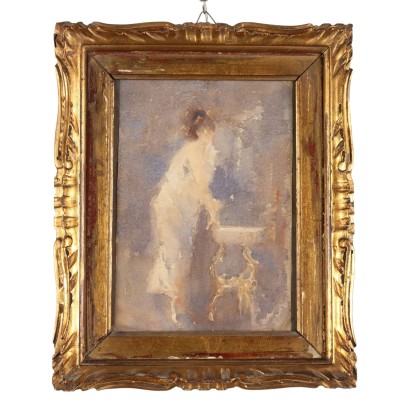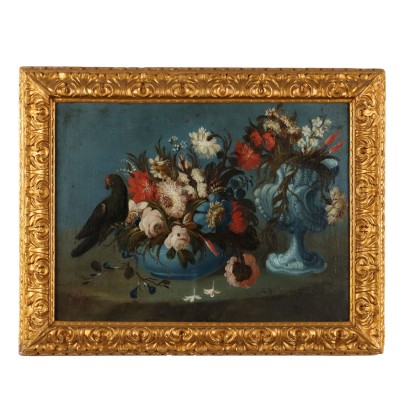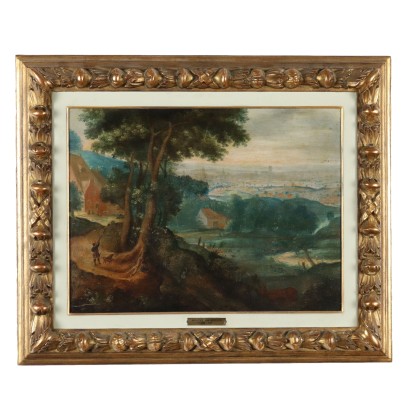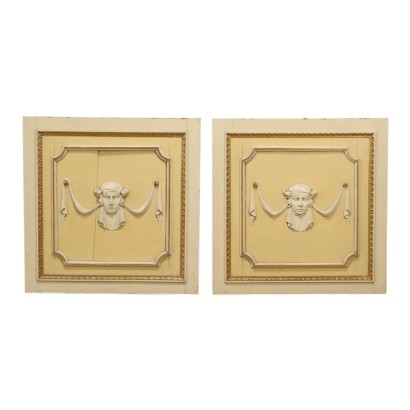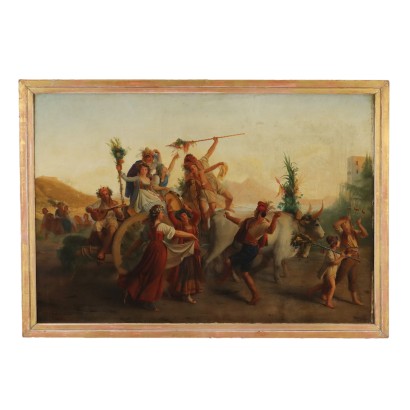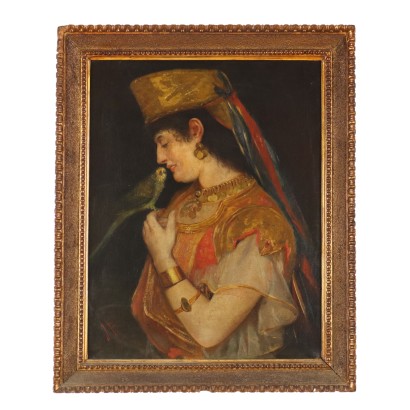Antique Mantelpiece Eclectic Style Fir Italy XIX Century - Italy, Late XIX Century
Features
Italy, Late XIX Century
Style: Eclecticism (1870-1890)
Age: 19th Century / 1801 - 1900
Origin: Italy
Main essence: Silver Fir
Description
Free-standing mantelpiece, second half of the 19th century, of eclectic taste, this mirror is made up of a single frame with carved moulding and a shaped cymatium.
Product Condition:
Furniture that due to age and wear requires restoration and polishing. We try to present the real condition of the furniture as completely as possible with the photos. If some details are not clear from the photos, what is reported in the description is valid.
Dimensions (cm):
Height: 176
Width: 134
Depth: 5
Additional Information
Style: Eclecticism (1870-1890)
Towards the end of the 19th century, the taste for combining elements taken from various styles of the past asserted itself. The eclectic style is therefore characterized by the mixture of stylistic elements from the Gothic, Baroque, Renaissance and Neoclassicism in search of elegant compositional virtuosity.Find out more on our blog:
The dictionary of antiques: Eclecticism
Classic Monday: a 19th century sofa, an example of eclecticism
INSERT ADDITIONAL LINKS:
Austrian taste for Baroque
The return of Baroque in decorative arts
History of antique European furniture
Age: 19th Century / 1801 - 1900
19th Century / 1801 - 1900Main essence: Silver Fir
Soft coniferous wood, used for rustic furniture or to build the chest, that is the structure, of furniture then veneered in more precious woods. It has been used since ancient times, its most valuable use is, in the Spruce variant, in the inlays of French antique furniture of the '700 . The spruce, more typical of northern Europe, in Italy grows mainly in the Eastern Alps at altitudes above 1300 m. The noblest use of this essence was in the construction of violins, guitars and cellos: Stradivari himself produced his famous violins with this wood.Other customers have searched:
Se ti interessano specchi, specchiere, psiche, toilette, dai un'occhiata ai nostri approfondimenti sul blog e presentazioni su FineArt
Leggi di più
Una coppia di specchiere a cavallo tra barocco e barocchettoIl nuovo gusto nel Granducato di Toscana tra Rococò e Neoclassicismo in una specchiera intagliata
Una elegante specchiera intagliata e dorata, espressione dello stile Regency
Il fascino senza tempo della Toilette
Un reimpiego di qualità: da trumeau a specchiera
Caminiera Neoclassica, Firenze, ultimo quarto XVIII secolo
Specchiera Neoclassica, Firenze, fine XVIII secolo
Coppia di Specchiere Irlandesi, in Stile Giorgio III, seconda metà XIX secolo
Specchiera Cinese, Ultimo Quarto XVIII Secolo
Consolle Parietale con specchi
Consolle inglese, metà XIX secolo con specchi
Caminiera Impero, Lombardia, primo quarto XIX secolo
Psiche Impero, Francia, primo quarto XIX secolo
Cornice laccata, Veneto, ultimo quarto XVIII secolo
Specchiera Barocca, Bologna Inizio XVIII Secolo
Specchiera a Cassetta, Bologna Inizio XVIII Secolo
Cornice edicola, Venezia, XVI secolo
Sull'antiquariato in generale dai un'occhiata anche a:
Classic Monday: da un pezzo dei nostri magazzini alla storia dell'antiquariato
L'antiquariato dalla A alla Z: il Dizionario dell'Antiquariato
Il dizionario dell'antiquariato - Lastronatura
Il dizionario dell'antiquariato - Mascherone
Il dizionario dell'antiquariato - Natura morta
Il dizionario dell'antiquariato - Opificio
Il dizionario dell'antiquariato - Pastiglia
Il dizionario dell'antiquariato - Savonarola
Il dizionario dell'antiquariato - Rosone
Intaglio barocco con motivo a ricciolo
Product availability
The product can be seen at Cambiago
Immediate availability
Ready for delivery within 2 working days from ordering the product.

